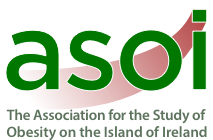Identification and expert panel rating of key structural approaches applied in health economic obesity models
- Categories: Economic Costs
Type Article
Journal Article
Authors
B. Schwander; M. Nuijten; M. Hiligsmann; M. Queally; R. Leidl; M. Joore; M. Oosterhoff; E. Frew; P. Van Wilder; M. Postma; S. Evers
Year of publication
2020
Publication/Journal
Health Policy and Technology
Volume
9
Issue
3
Pages
314-322
Abstract
Objectives: This study aims to assess the key structural modelling approaches applied in published obesity models, and to provide an expert consensus to improve the methodology and consistency of the application of decision-analytic modelling in obesity research. Methods: Using a previously published systematic literature search as basis, ten individual interviews, and a face-to-face expert panel meeting were conducted. Within the expert panel meeting, the interview findings were presented and discussed, rated and where possible consensus statements were obtained. In particular, five topics of interest were assessed: time horizon, model type, obesity-related clinical events simulated, event simulation approaches and external event validation. Results: In addition to generic modelling standards, several obesity-specific recommendations were generated: Simulating a lifetime horizon was regarded as optimal (100% agreement); Ideally, both short and long-term results should be presented (100%); Using a risk equation approach for simulating the clinical events was the most preferred approach (60%) followed by applying a body mass index (BMI) related relative risk to a base risk estimate (30%); Continuous BMI approaches were preferred (100%); An individual patient/microsimulation state transition model was regarded as preferred modelling approach (90%); Discrete event simulation (DES) was regarded as the most flexible approach for building an obesity model but it was recognised as complex, and more difficult to build, populate and to disseminate; Performing an external validation was rated as important (100%). Conclusions: The obtained insights, discussion and consensus can provide valuable information for developing decision-analytic models to generate high-quality and transparent economic evidence for obesity interventions.
